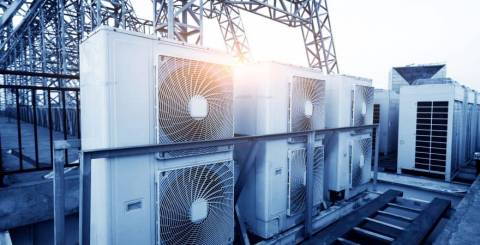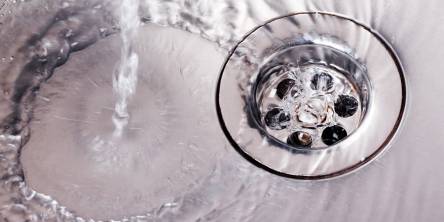What Are The Things Involved In Heater Maintenance? A Brief Checklist

Apart from providing warmth to your home in the cold season, your heater also regulates indoor air quality.
Like any other equipment, heating equipment needs regular maintenance to function efficiently. The maintenance can be corrective (done when an anomaly is detected), preventive (carried out at regular intervals), risk-based (done to integrate analysis and test periodically), or condition-based (done to monitor performance and control corrective actions).
When you invest in heating equipment either at home or in the office, you’ll want it to be at its best performance. You want value for your money. A heating system can last for many years without a replacement if well maintained. Moreover, your energy bills will be lower, fewer repairs, and the equipment will last longer. You can visit https://www.dmselectservices.com/round-hill/ for your heating equipment maintenance.
Below is a checklist of some of the things involved in heater maintenance:
1. Filter Inspection
Filters in an HVAC (Heating, Ventilation, and Air Conditioning) System are responsible for keeping the air clean and should be inspected and replaced regularly. The filter’s function is to trap particulates and pollutants such as fungal spores, dust, and pet dander. The more the filter traps these particulates and pollutants, the denser it becomes. If not changed regularly, apart from compromising air quality, a clogged filter will cause the fan to work harder to push air, resulting in high electricity bills.
The question is ‘how frequently should the filters be changed?’
It’s recommended that filters be changed between 30 to 90 days depending on your environment. If you have pets, reside in an area that’s high in pollen, or are susceptible to allergies, then change your filter more frequently.
2. Thermostat Inspection
The function of a thermostat is to regulate the air temperature by sending a signal to the boiler to either add or decrease the production of heat. It’s responsible for monitoring and maintaining temperature through sensors.
If the thermostat malfunctions, it may cause your HVAC system to keep switching on and off, record faulty readings, keep changing the temperature, and shoot your power bills. It may even stop working altogether.
During heater maintenance, the thermostat is inspected if it should be repaired or replaced.
3. Boiler And Furnace Inspection
A boiler heats water then distributes it as hot water or steam through pipes installed in a home along walls, floors, and ceiling to radiate heat. Furnaces, on the other hand, heat air which is then pumped and pushed (forcefully) through vents in the house.
Boilers and furnaces also need inspection and maintenance from time to time to enable their proper functionality.
Air trapped in the boiler, debris build up in the pipes, or dirt and dust in your heating system may hinder water flow and cause leakage in the pipes. The pipes attached to the furnace just like in the boilers can trap dust, dirt, and debris which apart from compromising air quality, may cause a fire.
The condition of your boiler and furnace after inspection will determine if they need maintenance or replacement.
4. Check Blower Motor
A blower motor’s function within an HVAC system is to circulate hot or cold air produced in the furnace into your home. Its proper function is critical as it maintains the desired temperature and humidity. During maintenance, the fans in the blower motor are inspected for cracks and dirt build-up, and the motor belt is checked for tear and wear.
A faulty blower motor will circulate cool air when it is supposed to blow hot air even when the furnace is running constantly.
5. Fuel Line Inspection
The fuel lines of your home heating system deliver fuel to the burner. Natural gas is used in the furnace or boiler system. Any leakage, therefore, can be dangerous as it can lead to poor quality of air, fires, or explosions. To avert this, have the fuel line checked frequently to ensure it's tightly sealed.
During maintenance, the entire fuel line is inspected for leaks and rust. If issues are found, it is advisable to replace the whole line instead of repairing it.
6. Ventilation Inspection
The work of a ventilator is to take out the stale recirculated air from your home and replace it with filtered, fresh air from outside. A ventilator also sucks out air pollutants. Without proper ventilation, your indoor space will become stagnant and uncomfortable and may even cause disease.
During maintenance, it is necessary to check for clogged grids which may hinder clean and proper air passage.
7. Ductwork Inspection
When the insulation in air ducts break or tear, heat is released within the walls and is lost, and doesn’t reach the right places in your home. This will cause the thermostat to read the wrong temperature. Subsequently, it will overwork your system and will result in high power bills. Your loved ones may also suffer due to a lack of enough warmth.
The insulation in the ductwork is inspected for tears.
8. Lubricate Oil Ports
Oil ports in newer heating equipment usually do not require oiling as they come permanently lubricated and sealed by the manufacturer. However, oil ports in some older heating equipment need attention. The same should be lubricated regularly with non-detergent motor oil or with grease for those that come with grease cups.
Conclusion
For heating systems to work efficiently, they need to be maintained regularly. Not only does servicing the HVACs prolong their life, but it also saves you from the inconvenience of high repair or replacement costs. You should ensure that your heating system is serviced on scheduled maintenance. An inspection of the entire system is recommended every six months.
It’s noteworthy that inspection, service, and maintenance should be left in the care of professionals who are trained to do the job.
Similar Articles
Enhance productivity and privacy by transforming your workspace with a soundproof phone booth—ideal for calls, focus, and modern office needs.
As families grow, the need for more space becomes inevitable. Deciding whether to renovate your current home or relocate to a larger one involves careful consideration of financial and logistical factors
Painting a house sounds simple. Pick a color, grab a brush, and go. But one big step often gets skipped. That step? Pressure washing.
Freshen up your space fast with easy home decor swaps—pillows, lighting, rugs, and more. Big impact, low cost, no renovations required.
Enhance safety, curb appeal, and energy savings with motion-sensor solar stair lights. Illuminate steps instantly, deter intruders, and enjoy easy, durable installation.
Blocked drains are a hassle no one wants to deal with. But with a bit of routine care and a few simple habits, you can avoid most drainage issues before they begin.
In big buildings where every inch matters, solving space problems isn’t always about making things smaller. Sometimes, it’s about designing smarter.
A shed is meant to be a strong, useful space—somewhere to keep tools, bikes, garden gear, and all the things that don’t belong in the house.
When it comes to increasing your house’s diminishing attraction, it’s frequently the small details that make the largest impact. Whether you are making ready to promote your home, awaiting guests, or absolutely want to be pleased with your own home's look, the outdoors of your own home sets the primary impact.









